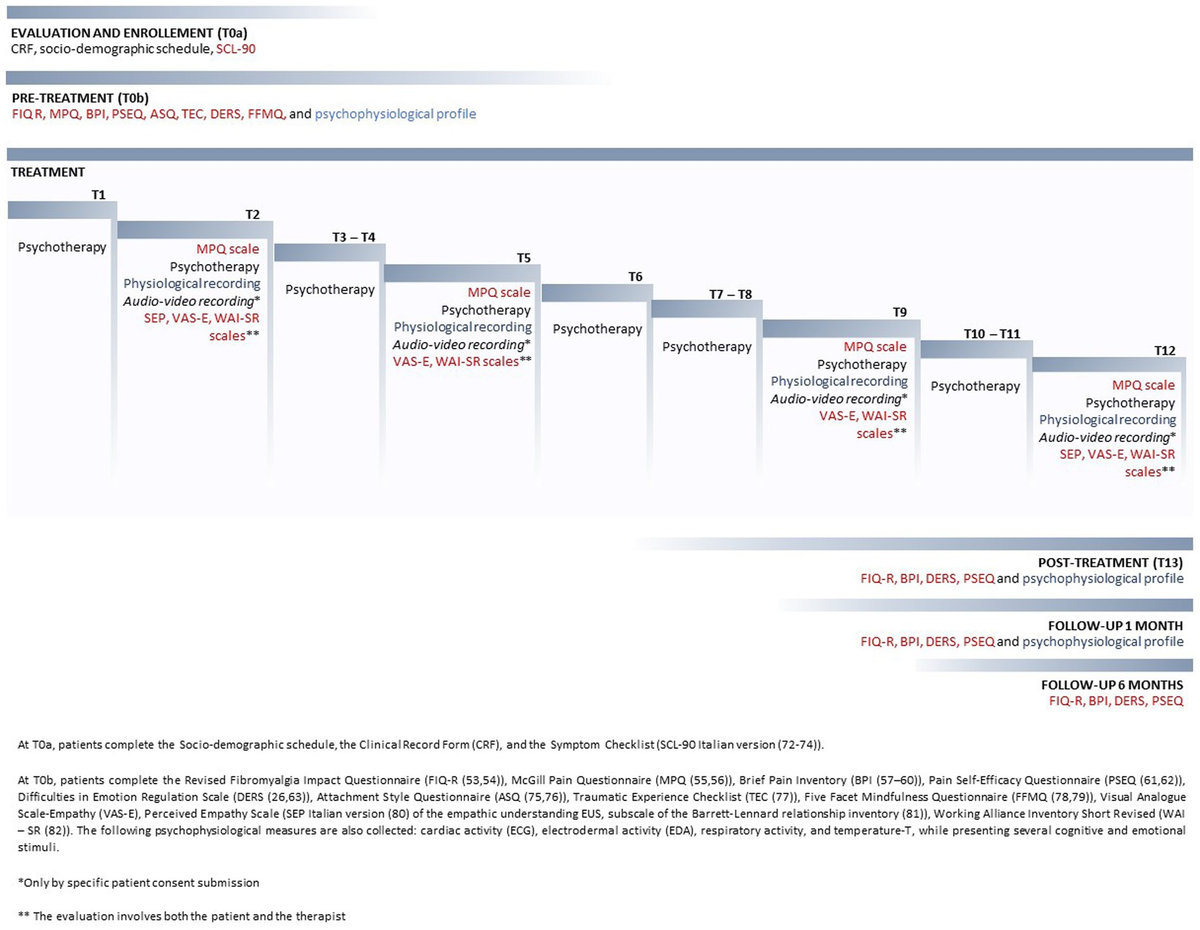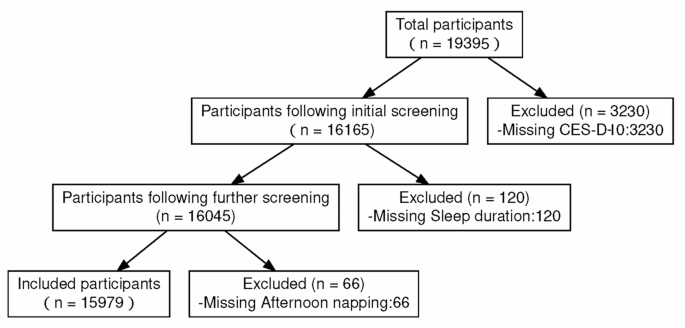Physical Pain Can Be a Sign of Unresolved Trauma — Here’s What You Need to Know
Muscle aches. Stomach issues. Tightness in your chest. Shooting back pain. You might assume these symptoms can be fixed with physical therapy, medication, or surgery. But what if none of these measures worked, because underlying the symptoms was deep-rooted, unresolved trauma? Research has proven time and again that trauma can live on in our bodies as well — meaning the only way to resolve the physical pain is to address the underlying emotional pain.
RELATED: Vulnerability and Emotional Suppression in Men
So, how is trauma held in the body exactly? We talked to several trauma experts who are well-versed in this connection — not only because of their work but also because they lived these experiences:
- Dr. Frank Anderson, a Harvard-trained psychiatrist and psychotherapist, and author of the recently released memoir To Be Loved: A Story of Truth, Trauma, and Transformation
- Karden Rabin, a somatic experiencing practitioner, co-founder of Somia, and co-author of The Secret Language of the Body
- Nicole Sachs, LCSW, a psychotherapist, host of The Cure for Chronic Pain podcast, and author of the upcoming book Mind Your Body
Below, they’ll share how they discovered that unprocessed trauma was driving their physical health problems — and how they recommend starting the journey to healing.
Can Trauma Manifest as Physical Pain?
As a licensed massage therapist who’s led mind-body connection training programs, Rabin knows a thing or two about how the human body works. So, when he developed debilitating back pain, he tried all the usual strategies. He went to a chiropractor. He developed a daily stretching routine. He began getting regular massages. But nothing worked — the pain persisted for years.
“The frustrating and humbling thing was that all my skills were failing to help me improve in the long term,” he says. “Moreover, treatments by other bodyworkers, chiropractors, osteopaths, physical therapists and acupuncturists also bought no lasting relief.”
While dealing with the worst bout of back pain of his life, Rabin stumbled upon Dr. John Sarno’s book Healing Back Pain: The Mind-Body Connection. He rolled his eyes but picked it up anyway.
“It was the first time I had ever read that chronic pain was invariably tied to repressed emotions and that the contemporary orthopedic, structural, and functional explanations for chronic pain had more holes in them than Swiss cheese,” he tells AskMen. “It was revelatory to me. The emotional and trauma-based explanation was a far more accurate assessment of my situation than the orthopedic or medical explanation.”
These days, Rabin helps countless others find relief from their chronic pain and other physical symptoms by regulating their nervous systems and healing their trauma.
For Sachs, it all started with the diagnosis of a spinal condition called degenerative spondylolisthesis — at the age of just 19. She was told that because of this abnormality in her spine, she’d never be able to play sports, travel, or have children.
Fortunately, in her 20s, she too found Dr. Sarno’s work.
“Through the understanding of his work and my own evolution of his theories, I healed myself completely from all of my chronic pain and have been teaching worldwide for over 20 years so people can do the same for themselves,” Sachs says.
Dr. Anderson, meanwhile, has struggled with seasonal allergies and asthma-related symptoms for most of his life. When he catches the common cold, it will often progress into a full-blown asthma attack, requiring him to use inhalers and steroids.
“I have come to understand that my trauma, like many others who suffer from abuse, is stored in my body, and it often gets expressed in me as a chronic cough or difficulty breathing,” he explains. “I have learned that when I don’t speak up about something that’s bothering me, I am prone to get sick, or when I’m disconnected from or ignoring my feelings about something that’s important to me, I will get an asthma attack.”
Why and How Trauma Physically Manifests in the Body
What’s through these experts’ stories is that the physical responses to trauma can range quite a bit.
As for why and how trauma manifests physically, the research is still ongoing. But here’s what we know so far.
“In the case of my body and most chronic pain sufferers, they experience muscle tension and intense pain in response to and in an attempt to protect them from underlying emotions like rage, sadness, and grief,” says Rabin.
After traumatic events, your sympathetic nervous system — also known as “fight or flight” — can remain overactive. As a result, the amygdala — a part of your brain highly involved in processing emotions — becomes on high alert, always on the lookout for potential threats. Meanwhile, the hippocampus — a part of the brain responsible for your memory and learning new things — becomes underactive. In other words, it becomes very hard for your brain to “learn” that you’re no longer in danger. Basically, your nervous system becomes “stuck” in the trauma-induced state.
“Your overflowing repressed emotional reservoir is triggering your nervous system into fight or flight and sending pain signals to the body,” explains Sachs.
As a result of this, your body is constantly flooded with stress hormones like cortisol, which can promote inflammation and drive up your risk of numerous health issues, including:
- High blood pressure
- High blood sugar
- Headaches
- Muscle pain and tension
- Weakened immune system / autoimmune disorders
- Chronic fatigue
- Inflammatory bowel disease, irritable bowel syndrome, and other gut problems
- Heart disease, heart attack, and stroke
“The reason that the brain and the nervous system send any pain signals at all, is because pain is seen as a protective posture,” explains Sachs. “When we feel pain, we pause and care for ourselves. We ask for help. We soften our own self-criticism. We draw boundaries in situations that are hurting us. Pain is protective, and people forget this when situations get chronic.”
Ever gotten a headache on a stressful day? And did you head straight to the ER for a CAT scan of your brain? Probably not, says Sachs.
“You know that emotional stimuli can cause physical pain,” she adds. “But when things get chronic, all of that gets thrown out the window. Chronic pain is an epidemic of fear, which increases the nervous system’s sense of danger, and causes it to send more pain signals.”
Research has shown that having chronically high cortisol levels can even impact hormone function, causing low sex drive, low testosterone production, erectile dysfunction, and infertility.
Through his own work with clients, Rabin has seen emotional trauma manifest as hip pain, migraines, TMJ, fibromyalgia, carpal tunnel syndrome, adrenal fatigue, plantar fasciitis, and even food intolerances. Sachs has also seen a connection between unresolved trauma and pelvic disorders, skin conditions, and pain in the wrists, knees, ankles, and neck. And Dr. Anderson notes that autoimmune diseases — including Chron’s disease, rheumatoid arthritis, and psoriasis — are often associated with unprocessed trauma.
“The reason the list is so varied and extensive is because the nervous system will choose the place in the body where you are most likely to pay attention and care for yourself,” says Sachs. “This is different in each person. But the different signals for symptoms are coming from the same place, and when you do the work to regulate your nervous system, no matter what the symptom is, it will stop firing.”
How to Tell if Your Physical Symptoms Stem From Trauma
One of the telltale signs that your physical symptoms stem from trauma is that they don’t get better with proven gold-standard treatments.
First, Rabin says it’s crucial to work with your physician to “rule out” any serious underlying medical issues. It’s important to note, though, that sometimes even when there does seem to be a medical explanation, that doesn’t mean that emotional trauma isn’t a contributing factor.
“Take low back pain as an example,” Rabin tells AskMen. “You may get an MRI that shows some disc degeneration or herniation around the area of the pain. Though this might seem like a medical problem, the truth is that study after study has debunked the correlation between MRI findings and pain. Long-term healing often lies in regulating the nervous system and healing underlying trauma that is causing the brain and body to function poorly.”
RELATED: What Is Emotional Flooding?
Pain that doesn’t have an obvious explanation — say, from a recent or past injury — can also suggest unresolved trauma is the culprit.
What to Know About Healing Trauma Stored in the Body
If there’s one thing experts want you to know about healing this unresolved trauma to address your physical symptoms, it’s that patience is key.
“There is no specific timeline, and I always caution people not to watch the clock,” says Sachs.
Her motto when it comes to healing is: The slower you go, the quicker you get there. That’s because your nervous system needs to be sent a message of safety — which can’t be achieved by rushing.
“My healing came in two primary phases,” says Rabin. “The first was just learning about this work and realizing that my body was not broken, that it was not in danger, and that I wasn’t fragile and helpless.
This allowed me to feel safe and empowered in relation to my symptoms. This decreased their intensity and reminded me not to fear them, but to be curious about them. The second stage was to learn mind-body practices to feel the repressed nervous system dysregulation and emotional states ‘underneath’ the pain and learn how to feel, express, and soothe those feelings, which then made the tension and pain go away.”
Rabin uses this example: let’s say your partner snaps at you. If you don’t know why they’re so irritable and angry, it’s a lot more scary. But if you know they’re just hangry, you probably don’t get as triggered by their behavior. There’s an explanation and an obvious solution.
“When you know that your symptoms, however awful, aren’t dangerous or life-threatening, you feel safer, better, and more in control,” explains Rabin.
Remember: these symptoms are just your body’s way of telling you something. And Dr. Anderson says he’s learned to listen to these messages.
“They are often important communicators of emotions or feelings that I am unaware of or not paying attention to,” he tells AskMen. “Now, when I begin to get a viral illness, I will meditate or journal or go for a run and try my best to listen to what my body is trying to let me know. When I do connect to the information and implement it in my life, my symptoms typically resolve quicker, and I live a more truthful, aligned, and authentic life.”
While there’s no one-size-fits-all approach to healing trauma, here are some strategies that experts have found helpful:
- JournalSpeak: Sach’s expressive writing technique, is aimed at “allowing you to be comfortable with discomfort.” “Paired with self-compassion and radical acceptance, both of which I teach, this allows the nervous system to go from fight or flight to rest and repair. JournalSpeak involves listing any events from childhood through adulthood that caused big feelings like fear, guilt, anger, shame, or humiliation. Then, you list any current stressors in your life and any personality traits that may be contributing to your current stress. After picking a topic from your lists, you write about it for 20 minutes without any self-judgment or censorship. Stay aware of any emotions that are coming up while you journal. Finally, do a self-soothing meditation for 10 minutes after you’re done journaling to ground you. Learn more about this exercise here.
- Therapy: “The best approach involves active therapy with a skilled trauma practitioner,” says Rabin. “I recommend practitioners training in Somatic Experiencing or Internal Family Systems Therapy for trauma.” Dr. Anderson agrees that these are effective approaches for treating trauma, and also notes that Eye Movement Desensitization and Reprocessing (EMDR) is another research-backed option to consider.
- Self-help: If therapy isn’t a viable option for whatever reason or you’re interested in doing more self-work at home, consider Somia’s HEAL Program. Some books that might prove helpful include: The Body Keeps The Score, Transcending Trauma, The Secret Language of the Body, Unlearn Your Pain, and the soon-to-be-released Mind Your Body. Rabin also recommends Curable’s app and the Like Mind, Like Body podcast. Sachs also offers multiple online courses, including Freedom From Chronic Pain and Freedom from an Anxious Life, which combines video lessons, guided JournalSpeak practices, art therapy, and supportive resources. And Dr. Anderson’s course The Arc of Healing features educational video sessions, a live Q&A session, and downloadable exercises and worksheets.
Above all, experts want you to know that there is hope.
“I’ve watched people regularly in my years of practice go from being totally debilitated to living lives of total freedom — running marathons, having children, being back at work full-time,” says Sachs. “It’s really incredible to watch.”
You Might Also Dig:












